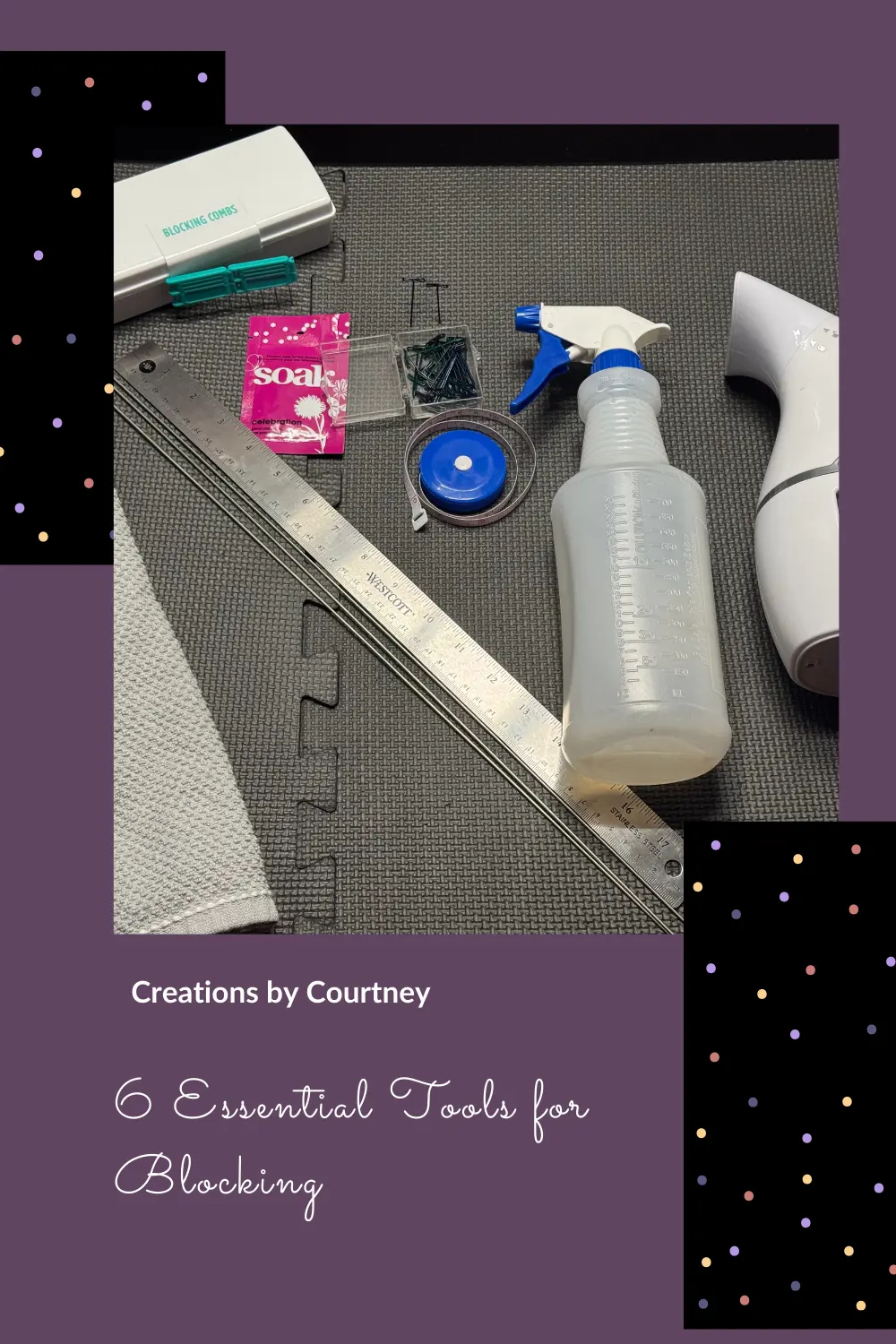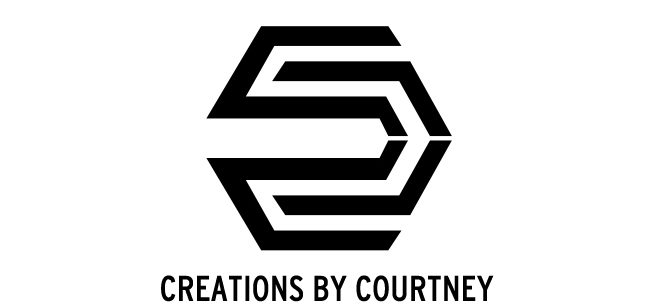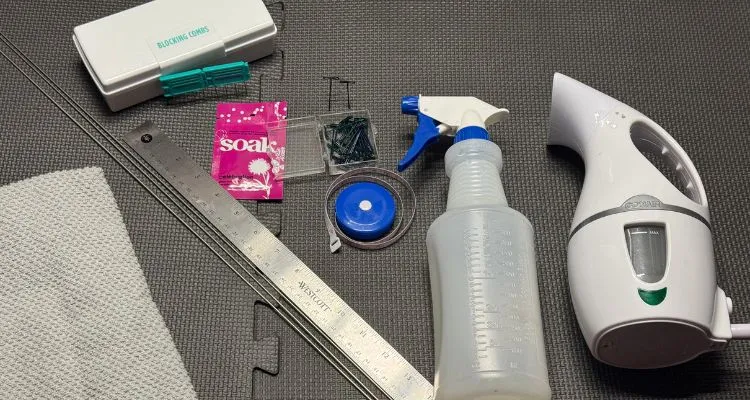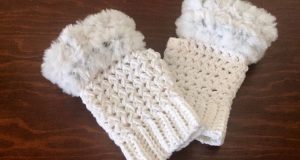Blocking is the secret weapon every crocheter needs to understand. It’s a simple technique that can take a sweater from meh to outstanding. No matter the crochet project (and yes, this includes knit), blocking helps with shaping, smoothing out the fabric and adds that professional touch to make others wonder if you bought it from a store. It’s essential for showcasing lace work or dense stitching to ensure that your handiwork drapes and fits beautifully.
To round out one’s crafting tool arsenal, let’s take a look at the tools that Creations by Courtney strongly recommends. Before you look at this list, it is not extensive and you do not need to get all of the items at once, but can slowly add them to your crafting tool box. We’ll also go over how each tool is used.
From foam mats and rust-proof pins to steamers and blocking wires, we’ll cover everything you need to transform your crochet pieces into professional-quality creations. Whether you’re a beginner or a seasoned crafter, this comprehensive guide will help you unlock the full potential of your crochet projects. Plus, you’ll find links to trusted products so you can start building your blocking toolkit today.
Disclosure: This post may contain affiliate links to products that I use, and think you will enjoy using too. Should you decide to use any such link, I will earn a small commission at no cost to you. Thank you for supporting this small business.
Essential Tools for Blocking Crochet Projects:
1. Blocking Mats or Boards: You need somewhere to lay the piece flat to dry in its final shape and size. Laying a wet crochet sweater on the carpeted floor is a bad idea, as it’s not meant for drying our crochet items, a trip hazard, and a good way to introduce mold. Instead, you want something that can be moved, and handles the moisture.
- Interlocking Foam Mats: This is my favorite! These mats can be arranged to accommodate various project sizes, and some come with grid lines to assist in precise measurements. As a crochet garment designer, I use the 24″ x 24″ interlocking foam mats that you can purchase from the hardware store, but they don’t have the helpful grid lines.
- Wooden Blocking Boards: besides being gorgeous to look at when not in use, a wooden blocking board is ideal for motifs and granny squares. Each board features a grid of equally spaced holes and comes with a set of stainless steel pegs that can be placed in the corners or other points when blocking the motif. Additionally, if the pegs are several inches long, you can wet the squares first, and then stack several, these boards often feature a grid of holes with pegs to help maintain consistent sizes.
2. Rust-Proof Pins: these pins are different than straight pins used in sewing. These are typically in a T shape so that they are easier to pick up and place. Sewing pins are meant to hold items in place while sewing and not meant to be wet numerous times, as they can rust over time.
- T-Pins: will not rust from being wet numerous times. They are super duper helpful for pinning corners, shapes and edges that are not straight. They are slim enough to not damage the fiber of your crochet project when pushed through to the mat.
- Blocking Combs: These were a game changer for me when I got my first set! Each comb has 4 or more pins, so it’s easier and faster to pin a crochet top to the mat for drying. The pins in a blocking comb are also rust-proof to withstand the water of thousands of projects. And they are especially helpful to make straight edges.
3. Blocking Wires: are less known in the crochet community, but soooo helpful when working on large wearables like shawls and wraps, but especially for garments. The wires are woven through the edge of the fabric to create a straight or angled side, and only a require a few T-pins to hold it in place. It helps with tensioning the fabric, as well, since you can secure one side and then easily pull the other sides to secure.
4. Spray Bottle: A spray bottle is much easier to use and travel with compared to a steamer. You can control how damp the fabric becomes for blocking other smoothing out the fabric. I like to add a little bit of a gentle detergent, such as Soak, for the gentle scent and to soften the fabric.
5. Tape Measure or Ruler: You likely already have these tools, but did you know that you need to replace the flexible measuring tape? Sadly, the tape measure can stretch over time and provide inaccurate measurements. It can help to periodically compare the measurements with a straight ruler to know when it’s time to replace it. As far as a ruler, have a few different lengths, from 6″ [15 cm] to 36″ [91 cm] based on the size of project. Choose the tool based on preference, and use for checking gauge before and during your project, but especially when finishing to ensure the proper fit.
6. Steam Iron or Garment Steamer: a steamer is super helpful when needing to remove wrinkles or fold lines in your garments (there might be fold lines from storing your garments because you don’t want to hang them *wink wink). Steaming is also helpful for blocking purposes, as the heat and moisture relaxes the fiber. If you do not have a steamer, an iron with the steam function works too. Just remember to never place the iron on the fabric, as it can burn (animal or plant) or melt (acrylic or other man-made material) the fabric if placed on top of your crochet wearable.
Want to see each tool?
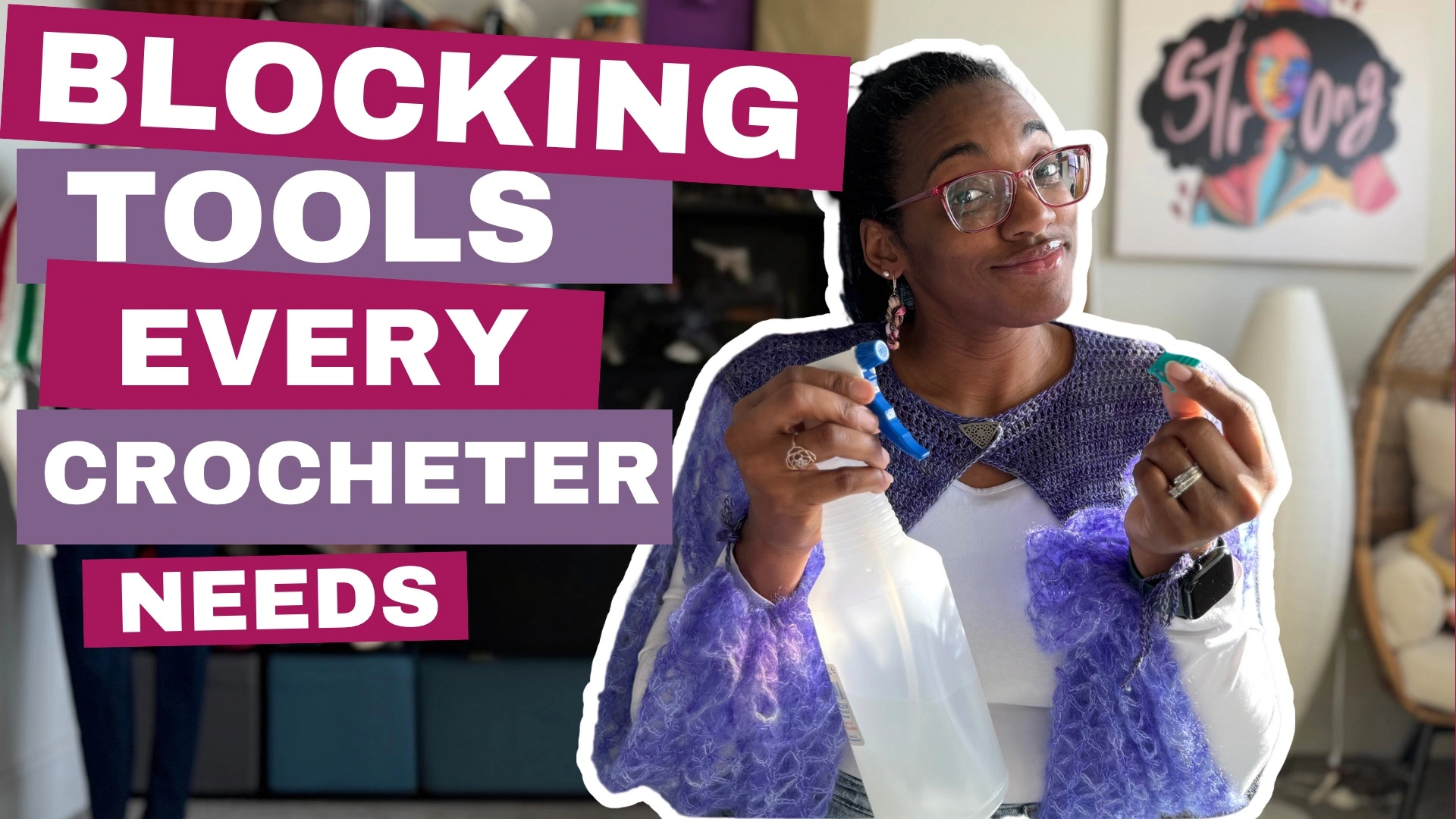
Which Method To Use and When
One can block by spray, steam or soaking. You can use any method, but you may have a preference based on the project and fiber content of your crochet wearables.
When creating any crochet garment in a lace mesh or motif pattern, wet blocking will provide the most growth. Growth refers to how much the fabric will stretch, and this is especially important to note for natural fibers like wool and cotton.
To wet block, you can use a large sink or basin, such as this one or this one, to soak the entire crochet piece in tepid water (avoid hot water, as it may cause the color to bleed in hand dyed yarn) with a gentle detergent for 15 minutes. Drain the waiter and gently press out excess water. Do not wring the fabric, as this will misshape your wearable. Lay the piece on a blocking mat and secure with T-pins or blocking combs to the final dimensions and allow to dry completely.
Spray blocking involves securing the crochet piece to final measurements and shape, and then dampening the fabric with a water-filled spray bottle. Typically used when minimal shaping is needed, and can be used with any fiber.
Steam blocking is best for heat-tolerant fibers like wool, cotton, and acrylic. As stated above, you hold the steamer or steam iron above the fabric and never place on the fabric. As with each method, you leave the item to dry, but steaming can be used to remove wrinkles without securing to a blocking mat.
Tips for Effective Blocking:
• Check Fiber Content: Always refer to the yarn label for fiber content and care instructions to determine the most appropriate blocking method.
• Use Rust-Proof Pins: To prevent staining your project, ensure all pins used are rust-proof.
• Avoid Direct Heat on Acrylics: When steam blocking acrylic yarns, do not let the iron touch the fabric directly, as it can melt the fibers.
Blocking is the finishing touch that can make your crochet projects truly shine. By investing in the right tools and learning the appropriate techniques for different fibers, you’ll elevate the look, feel, and fit of every piece you create.
Ready to take your crochet to the next level? Start building your blocking toolkit with the recommended products linked in this post, and watch as your handmade creations transform into stunning works of art. With a little time, the right tools, and a bit of patience, you’ll soon master the art of blocking and bring out the best in every stitch.
Have more blocking tips or tools you love? Share them in the comments below—we’d love to hear from you!
Pin It for Later
